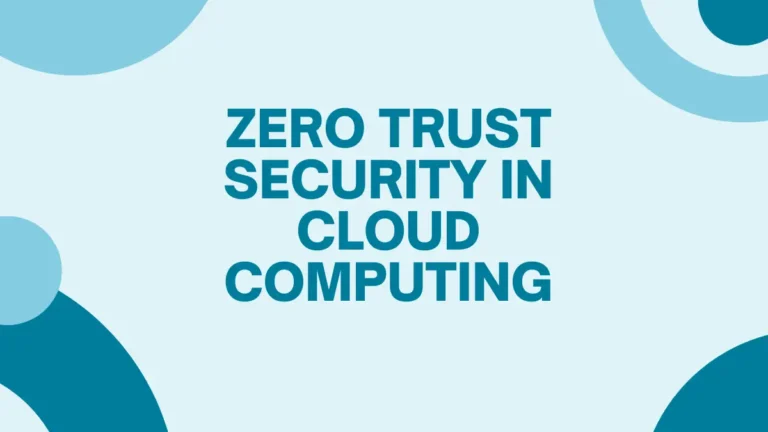Cloud computing is the new rage, and if you run workloads on AWS (Amazon Web Services), it’s time to stop lauding its benefits and shift focus to securing your workloads on AWS. Yes, AWS is cost-effective, highly scalable, easy to use, and all that good stuff, but that does not mean it is devoid of vulnerabilities. Unless you bolster your workloads’ security on AWS, it could lead to credential stealing, data theft, and so on.
Currently, over 85% of businesses rely on the cloud for data storage, of which 32.4% use AWS to power their businesses. However, little is spoken about the security of the cloud-based servers, far more important than speed, cost, and scalability. So, we decided to resolve this by pinpointing some of the most common security concerns surrounding this technology, along with valuable tips to improve the security of your AWS workloads.
Use Multi-factor Authentication
To start on the right foot, it is inevitable to protect the login credentials that provide access to critical workloads on AWS. You don’t want to get locked out of your account or lose valuable data, which is very much possible with weak authentication. Passwords are easy to crack, and all it takes is a successful brute-force or password spraying attempt, and that could be the end of your business. You can prevent this by using multi-factor authentication, which is hard to crack.
It involves entering the usual username and password and then confirming your identity through yet another communication mode like the phone or email on which a verification code is sent. Many users find this time-consuming and therefore avoid opting for it, but that could hamper your workloads’ security on AWS. A study conducted by Microsoft confirms that credential attacks can be reduced by 99.9% through multi-factor authentication.
SSL Security
SSL security is related to website data security and SSL can be from AWS platform or third party providers. There are many third party and cheap ssl providers that can fulfill your website security requirement.
SSL certificates activate the HTTPS protocol, which prevents the interception of data packets exchanged between the client and the server. This process is carried out through a cryptographic suite that facilitates public-private key encryption.
An SSL certificate prevents attacks such as Man-in-the-middle, packet sniffing, and data theft, but to get the most out of it, one must install the correct SSL type. Since most websites running on the cloud have a complex architecture consisting of multiple subdomains, you recommend using a more comprehensive solution like the Wildcard SSL certificate. This cert will extend security to your chosen primary domain and multiple first-level subdomains.
In the world of the internet, each subdomain is treated as a separate site, and therefore a domain validated (DV) SSL, sometimes referred to as a standard SSL, does not suffice. As the DV SSL encrypts only one domain (the primary domain or a particular subdomain), it leaves the remaining subdomains vulnerable.
Therefore, opting for a Wildcard SSL to establish secure sessions between the AWS servers and the client is a highly recommended security measure. The Wildcard SSL encrypts communication between the server and the primary domain and between the server and all the subdomains of the encrypted primary domain.
Ensure Proper Configuration Management
Misconfiguration is one of the most common reasons for AWS security breaches, and although the defaults set by Amazon are highly secure, human errors can make them otherwise. For instance, the bucket is always set to private by default, but someone may change it to ‘public’ by mistake.
Therefore, AWS provides a configuration manager known as the AWS Config to manage resources on the cloud efficiently. It keeps track of the instructions provided by the user and ensures that those instructions are adhered to. The best way to safeguard your AWS workloads is by conducting periodical penetration tests, internal gray box reviews, and vulnerability assessments.
Use IAM for Better Security
One of the most potent measures in securing your website and apps is implementing a robust Identity and Access Management system. It puts you in the driver’s seat, allowing you to proactively keep the AWS workloads secure by mitigating risks and tracking anomalies in real-time. Also, it prevents intruders from breaking into your private network through secure authentication.
File Integrity Monitoring
File Integrity Monitoring (FIM) lets you stay on top of what is happening to your files located within the cloud environment by tracking changes. It alerts the user about helpful information, such as when the files were accessed, modified, added, or deleted. By closely monitoring these changes, users can detect attacks earlier and adopt necessary measures to keep AWS’s workloads secure.
Configure Security Alerts
Your time is valuable and must therefore be used to fix vulnerabilities rather than finding them and then fixing them. As the detection takes time, it only makes sense to automate that by setting up security alerts to detect anomalies. You can then prioritize fixing them based on the risk level.
Thorough Visibility into your Cloud Environment
To keep your workloads on AWS safe, it is essential to have deeper visibility into what’s going on in the AWS environment. It would be best to gain a thorough understanding of what’s taking place with all the data files without missing out on anything. When nothing goes unnoticed, it puts the threat actor at a clear disadvantage.
Grant Access Carefully
Limit the access provided to users and employees to prevent insider and external attacks. This can be achieved by giving only as much access an individual needs to perform a specific set of tasks based on the user’s role.
Keep the IT Security Team Involved
Businesses need to keep the DevOps, and IT Security teams synced right from the beginning to implement necessary security measures throughout the development lifecycle. This allows the IT security team an opportunity to bring in their very own testing tools and methodologies.
Create Awareness
Now that you have bolstered your workloads’ security on AWS, it is essential to educate your employees about the security protocols implemented. Enlightening them about how those work to keep your data secure would make them more cautious and vigilant while accessing specific tools.
Final Takeaway
The increasing popularity of AWS and its 32.4% market share has not gone unnoticed by cybercriminals. Therefore, one can expect a surge in criminal attempts to gain unauthorized access to websites and applications hosted on this platform. If successful, this could result in dire consequences because over 60% of businesses shut down less than six months after a security breach. However, you can prevent that from happening by implementing the measures mentioned above to enhance your workloads’ security on AWS.
Also read about: Data Security in Cloud Computing. Is it Real?




